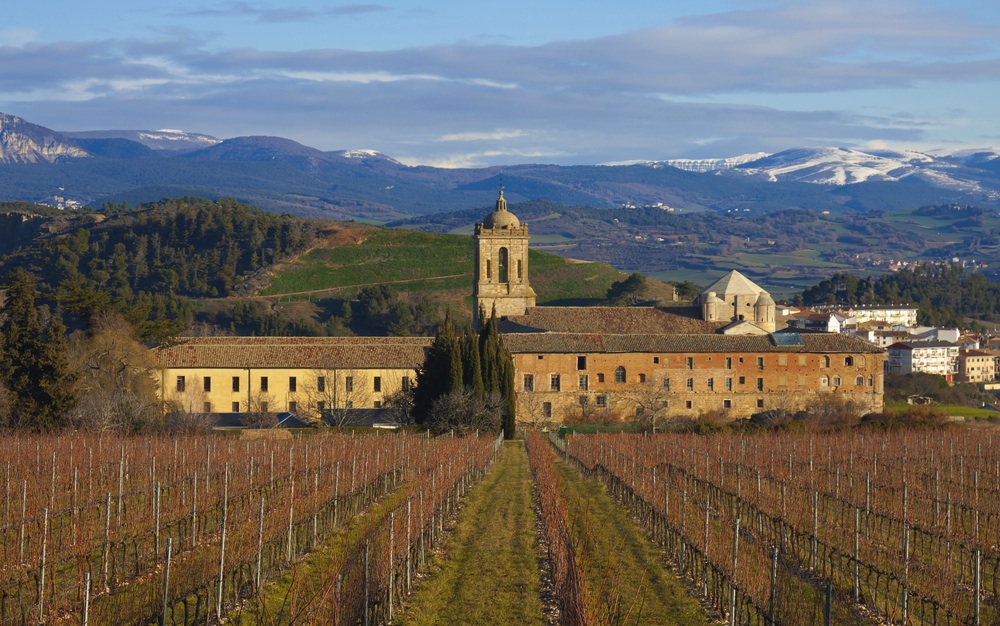Stages 1-12, 288km
Highlights
St. Jean De Pied Port
Roncesvalles
Pamplona
Puente de la Reina
Estella
Irache
Burgos
-Crossing the Pyrenees and French/Spanish border from the quaint village of St Jean Pied de Port to the tiny hamlet of Roncesvalles, with some of the most breathtaking scenery of the whole Camino.
-Experiencing the vibrant and happening town of Pamplona, home to the running of the bulls.
-Climb Alto del Peron outside of Pamplona to see one of the most recognisable and iconic images of the Camino, the iron cutouts of pilgrims through the ages.
-Stay in some of the loveliest towns on the Camino, Puent la reina, Estella, Los Arcos, Viana and Logrono.
-Drink from the wine fountain (yes, wine on tap!) at Irache.
-Sample some of Spain’s best wines in the vineyard covered province of La Rioja.
-Visit the UNESCO heritage listed town of Atapeurca, site of the discovery of the oldest human remains in Europe.
-Stay in the largest town on the Camino, Burgos, with its breathtaking cathedral.
Overview
This cover the first 12 stages of the Camino de Santiago as it crosses the border from St. Jean de Pied Port in France over the Pyrenees and into the Basque Country, passing through the major cities Pamplona and Logrono before finishing in Burgos. The scenery on these sections is quite varied from the mountains of the Pyrenees, through the green wooded and quite a hilly country through to Pamplona and then the more open country of fields and less shade past Logrono.
This is an interesting and varied section of the Camino to walk with plenty of variety and culture. There are many highlights and iconic Camino sites and the scenery changes constantly. But there are some things to consider if wanting to do this first section.
Firstly, St Jean Pied de Port is not the easiest place to get to. If coming from Australia or New Zealand, you have a day to get to a major city like Paris or Barcelona, then realistically at least an overnight stay here to recuperate from the flight, then a full day to get to St Jean with multiple trains/flights/buses involved. If you’re restricted with time this can be problematic.
And secondly, the first day’s walk from St Jean to Roncesvalles is one of the toughest days walk on the whole Camino. Many a prospective pilgrim has come undone after getting excited about starting their walk and pushing themselves to breaking point. There are alternatives to this first day and it can be circumvented by starting in either Roncesvalles or Pamplona. Something to consider.
Hints and Tips
-RONCESVALLES: Attend the 7pm mass here. It’s one of the most poignant on the Camino. It’s in Spanish but they occasionally break into English.
-ZUBIRI: The last 3km or so coming into Zubiri is very steep with awkward slanting stones. This can be very painful on the feet. From Alto de Erro you can walk on the road to alleviate this. It adds a little distance but your feet might appreciate it. You will enter town from the bottom, rather than across the river halfway in, by doing it this way.
-PAMPLONA: Go and have a beer with Ernest Hemingway. If you go into the cavernous Café Iruna, on a corner in the main square, and go through to the back bar you’ll be able to have a tipple with the permanently placed Hemingway. Also try the Pintos here (not tapas!). Divine!
-ALTO DEL PERDON: Immediately out of Pamplona, this iconic symbol of the Camino is worth the climb to reach. But the descent down the other side is both steep and very rocky. If it’s been raining heavily it could also be very water logged. A walking pole or two can really help alleviate the stress on the knees as you descend.
-ESTELLA: Or rather, Iruna, just out of Estella. Make sure you don’t miss the wine fountain. If there’s no other pilgrims about it’s easy to walk past it. It’s only about 600 metres out of Estella so if you think you’ve walked 1km you’ve probably past it!
-TORRES DEL RIO: Take the time to call the number on the church door to get someone to open it for 1 euro. It’s a pristine Knights Templar church, one of very few remaining.
-VIANA: A lovely Camino town, plan to spend some time here and not rush straight on to Logrono. If you’re spiritually minded, it’s lovely to sit in the grounds of the church ruins of San Pedro that dominate this town. Quite moving.
-LOGRONO: The capital of the wine growing region of La Rioja, to go through here without partaking of some of the finest of their specialty is a crime against humanity. Indulge!
-LA RIOJA PROVINCE: Beware the mud! Or more accurately, the clay. If its been raining, the red clay that La Rioja is famous for will cling to your boots like its life depended on it! Scrape it off, walk two more steps, and you will have three more inches on your soles! There’s no real remedy, this is just a warning.
-BELORADO: If you have time (and the energy!), it’s worth climbing up to visit the caves behind the town. These caves were once homes to hermits.
-ATAPUERCA: A very unremarkable town, but famous for being the site where the oldest European human bones have been found. There is a museum here but a little off the Camino, so plan your day if you want to visit. It would also be closed for siesta in the afternoon.
-BURGOS: Goes without saying but definitely visit the cathedral. Very impressive. Also, try the cordero, or lamb. Delicious!
Altitude profiles
Altitude Profiles of 33 stages of Camino
This was produced by the French friends of the Way of St. Jacques






